Mirage: Arcane Warfare Review
Crunchy, kinetic combat cracks under trend-chasing design choices
Mirage: Arcane Warfare is the second melee-focused multiplayer game from indie developer Torn Banner Studios. Following on the success of the highly entertaining but slightly clunky Chivalry: Medieval Warfare, the team have opted to bring over the core melee system from that game and revamp just about everything else. Instead of a gritty medieval setting, Mirage features a much more colorful, somewhat middle-eastern art style that is seemingly inspired by Disney’s classic animated film Aladdin. The core melee combat has been bolstered with a variety of magical spells and abilities, as well as a much improved movement system. While the tweaks and additions to gameplay are almost all positive, some of the other design choices Torn Banner have made here are much less successful, making for a occasionally fun but uneven package.
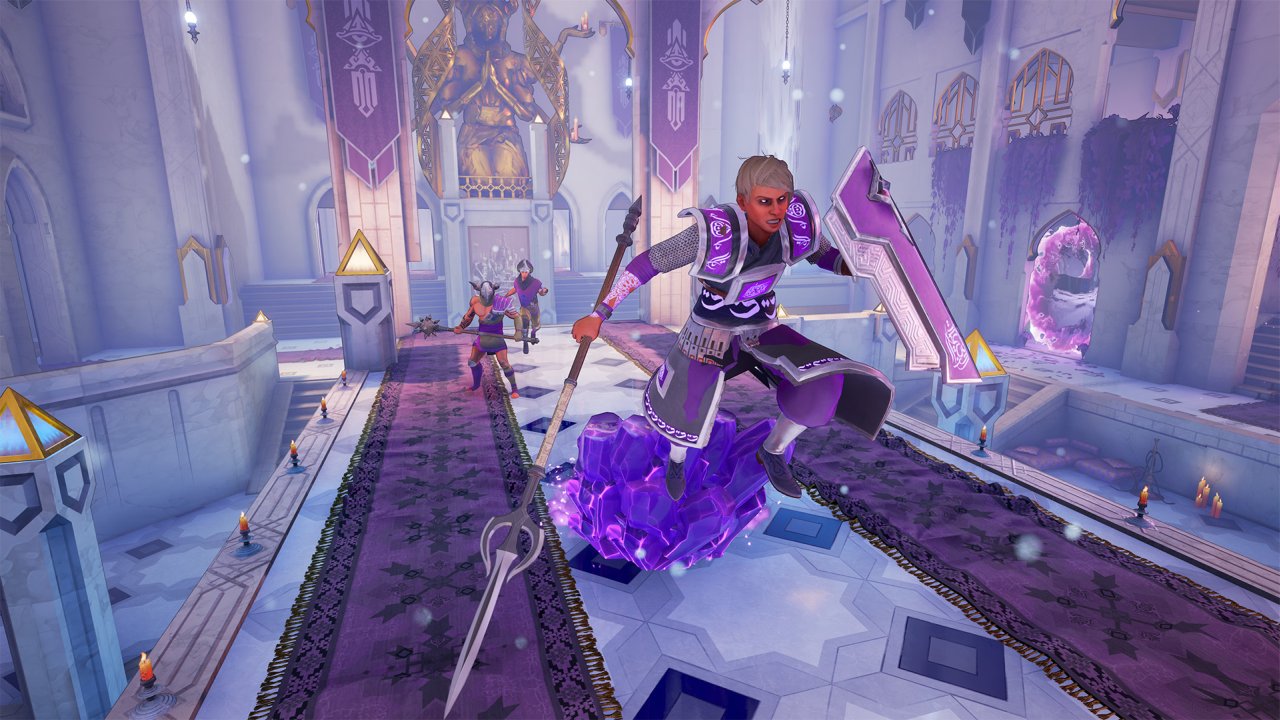
The best way to describe how the sequel plays is a mixture of Overwatch and Chivalry. Everything from the UI design to the player counts and game modes will be instantly familiar to any Overwatch player, and while the combat ultimately benefits from the merging of ideas, other aspects of the game suffer badly. The two things that made Chivalry so much fun in my eyes was the weighty and satisfying melee combat, and the unique and highly entertaining Team Objective mode. The good news is that Mirage takes the core of what made Chivalry’s gameplay so much fun and builds upon it.
The core melee combat system will feel instantly familiar to anyone who played Torn Banner’s previous game. It is slow and deliberate, with long wind-up times on weapon swings that necessitate good timing if you want to block or avoid the incoming blow. Different weapons attack at different speeds and have different ranges, and can be swung in a few different ways; clicking will perform a regular slash, while scrolling the mouse wheel up and down lets you perform a jab or overhead attack. When you successfully make contact with your target, the meaty sound effects and animations really sell the weight and impact in a satisfying manner.
The biggest shake-up to the combat comes in the form of special magical spells. There are six classes in Mirage, each with unique weapons and abilities. The classes range from the slow, heavy damage dealing Taurant to the agile but relatively fragile Vypress. Each of the six classes can choose between one of two weapons, and three of six special or magical abilities. The classes certainly have overlap; just about everyone will be using a melee weapon, though they each have special abilities that make them useful in different ways. A couple of classes are best suited to getting right into the fray, while others play more of a support role with healing abilities or more ranged attacks, with the Alchemancer class having the option to go completely ranged and rely entirely on spells.
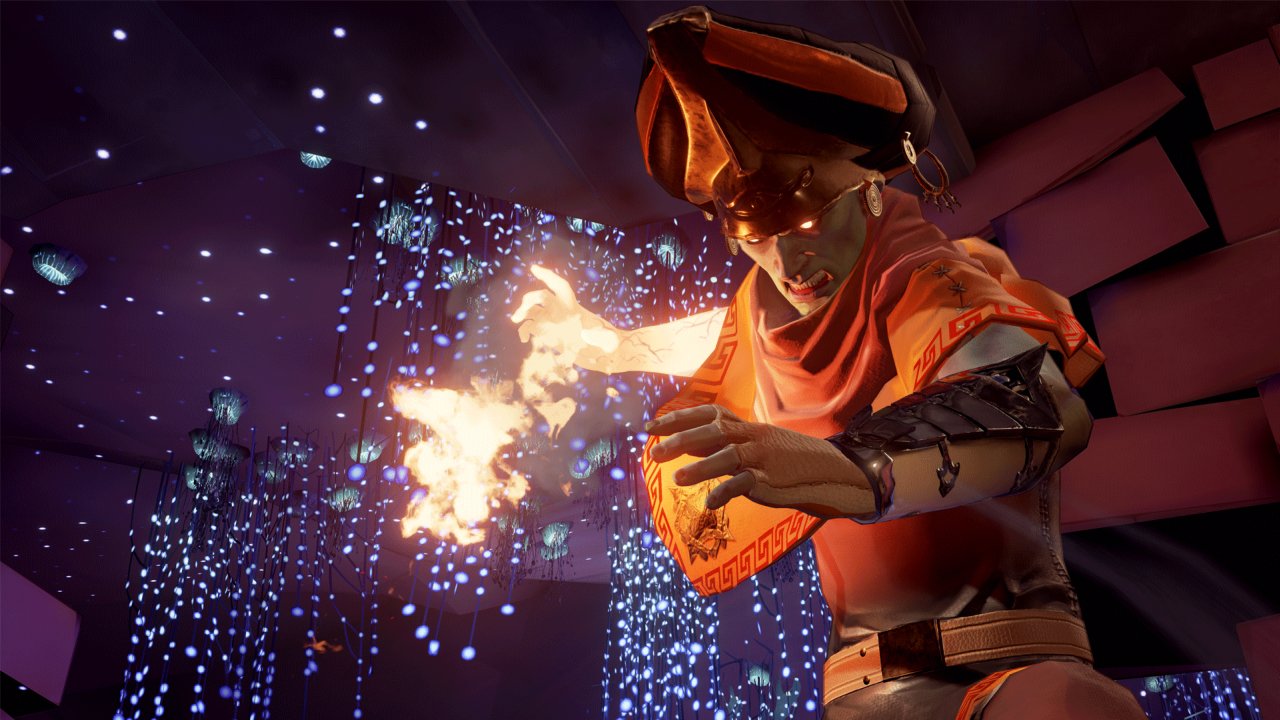
The abilities themselves vary wildly in nature. Generally they are divided into three categories; mobility, damage-dealing and support. The tank class for instance has a variety of heavy-hitting close range attacks such as an explosive punch, charge move and whirlwind attack. One of the support characters can throw healing grenades, and quickly summon a magic carpet to either escape a bad situation or quickly get to a teammate who is in need of healing. The Alchemist can briefly fly around in the air and reign spells down on players below. The abilities you select for each class will be highlighted in the bottom left of the screen with the buttons needed to activate them along with their cooldown timers, and you can also bring up a description for them at any time; a bit of UI design borrowed from Overwatch that works well here.
While many of these skills are powerful, they don’t feel out of place as most of them are only useful in certain situations, and require good timing to pull off. Most abilities have a wind-up time just like melee attacks, and if you hit an opponent when he is trying to use a special ability it will often be interrupted. Almost any special attack - be it ranged or up-close - can be blocked to avoid damage, and some ranged projectiles if blocked successfully can be sent back at the attacker if you aim well. Overall, this mixture of satisfying melee combat and varied magical abilities is a winning formula. When you win out in a close engagement it is extremely satisfying, and there is enough depth between the Chivalry-esque melee systems and magical abilities that it will take some time to learn everything.
The movement has also seen improvement compared to Torn Banner’s previous game. You can now double-jump up walls, or perform quick wall-jumps to rapidly traverse the map or escape pursuers. While not the most advanced parkour system around, it is well implemented and the smooth movement system fits well with the style of gameplay, and leads to some fun chases where a single player is trying to escape a larger opposing force, and the maps have clearly been designed with this increased mobility in mind.
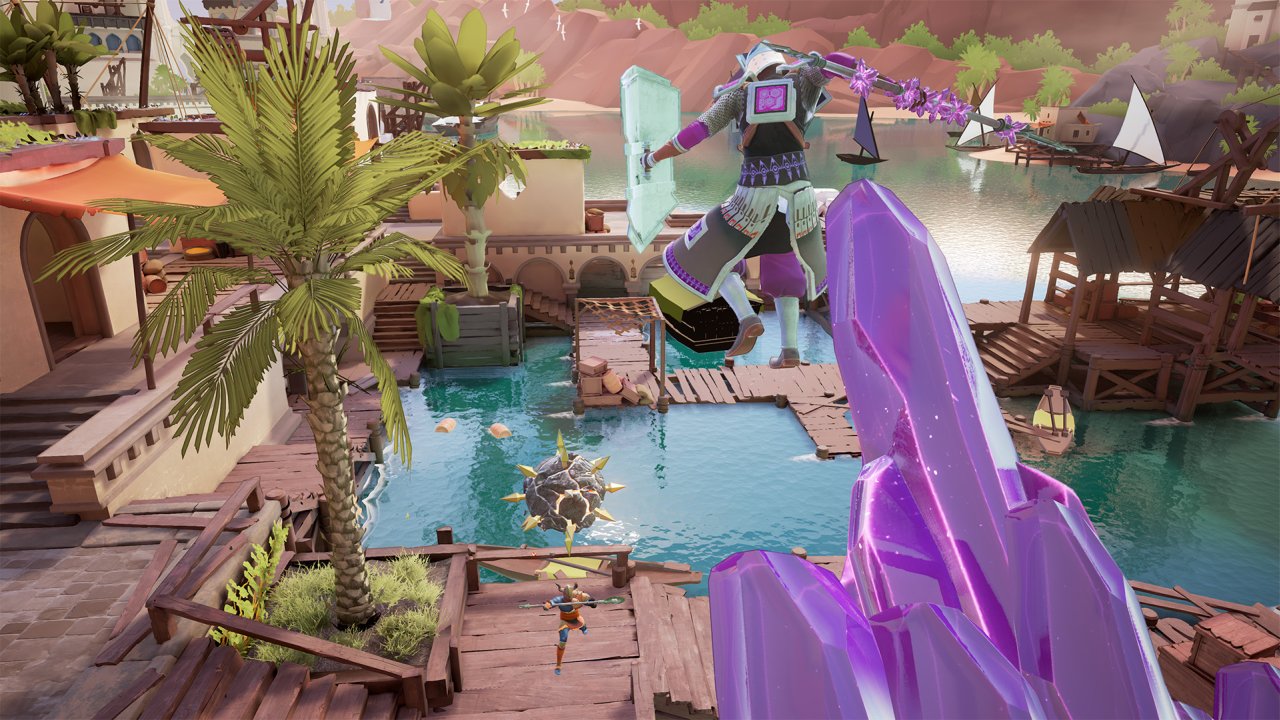
But while Torn Banner succeeded in building on the already enjoyable gameplay present in Chivalry, they dropped the ball in several other areas. As with Chivalry, Mirage’s combat is most enjoyable either in 1v1, or when there are large groups of players from both teams having a massive brawl. Unfortunately, the available game modes make these types of encounters rare. Chivalry’s Team Objective mode succeeded because of the unique and novel objective types, and also because there were as many as thirty two players in each game, allowing for constant action throughout the match, letting you run in and start fighting right after spawning.
Despite a decent variety of maps and modes, Mirage’s objective modes are inferior both in terms of objective types and pacing of action. All of the objective modes are six on six with appreciably long respawn timers. This makes for sparse action, and generally uneven confrontations as one team will typically prevail and stay alive while the other team becomes out of sync with players spawning at different times and running in only to die from the more dominant team who has more players on the field. The only option for the losing team is to wait for everyone to spawn and go in together, but this kind of organized play is rare when playing with random participants and also harms the flow and momentum of matches.
The objectives themselves are very much standard fare; cart pushing, objective capturing or capture the flag, only made somewhat confusing initially by poorly explained game-specific terms such as ‘Glyph’ and ‘Jinn.’ It is hard not to think that these modes and low player counts were again inspired by the success of Overwatch. One crucial ingredient though, that allows Overwatch to succeed with these smaller matches - beyond the differences in gameplay style - is the large player population and matchmaking that allows for mostly even games. Sadly, Mirage currently has a rather small playerbase and no team balancing mechanisms. This means that new players could often be forced to play against highly skilled veterans, and team-stacking is a big problem, accentuated by the lack of a proper training mode to let newcomers learn the different classes and abilities. Across the dozens of matches I played, almost all of them were extremely one sided with high level players on one team absolutely dominating lower level players on the other.
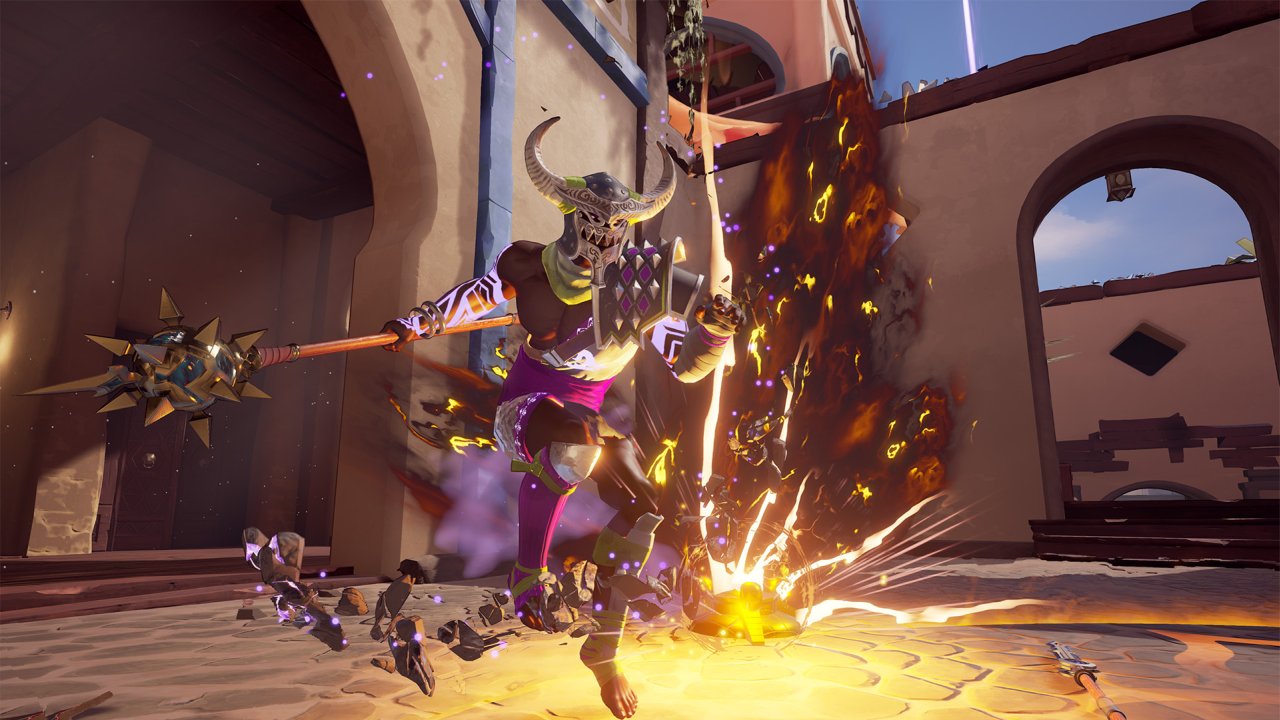
There is no stat-tracking or incentive to stay in a match beyond increasing your player level and cosmetic rewards at the end, so frequently players on the losing team will start to leave, creating a snowball effect and even more one-sided games. This problem is exacerbated by the low player count, as a single highly skilled player can completely dominate an entire match. With a large player base and some kind of skill-based matchmaking these 6v6 objective modes might have worked a bit better, but currently there is very little joy to be found here.
Fortunately, there are a couple of non-objective modes that are less problematic. I ended up having the most fun with Team Deathmatch, as this is 10v10 and the larger player count prevents a single skilled player from completely dominating to the same extent, and some of the chaotic energy that feels missing from the objective modes returns here. The 3v3 Arena mode that is also pretty much copied directly from Overwatch can also be fun, but again a single skilled player can pretty much dominate this mode to the point of ruining enjoyment for other players. The vast majority of my time in Chivalry was spent in the 1v1 duel mode and larger scale Team Objective mode, and the fact that Mirage has neither seems like a huge misstep on the part of the developers.
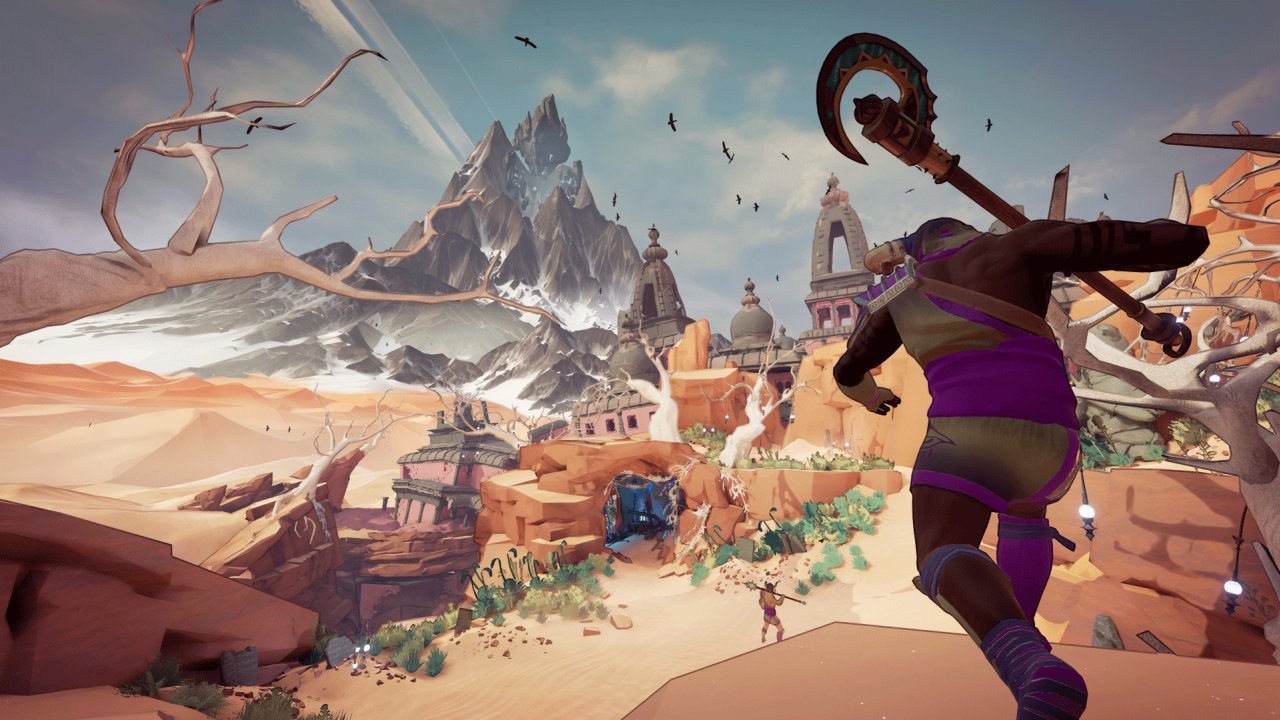
The colourful art style employed by Mirage couldn’t be more different from the gritty medieval theme of Chivalry. The two teams are always Orange or Purple, and these colors are featured heavily on most maps and on player customization items in conjunction with the vaguely Arabian theme. The game runs on Unreal Engine 4, and the game looks quite good as a result, with crisp textures and lighting making Mirage easy on the eyes. It also ran fairly well for me, though I did experience a couple of crashes.
One great aspect of Chivalry’s presentation that did make it over is the outrageous yelling and screaming. You can taunt when stationary, or press the same button while running to let out a glorious scream as you charge into battle. The audio design during combat is strong, thanks to meaty sound effects for weapon and spell impacts, though the background audio is lacking compared to Chivalry. The music is a bit goofy, and seems to bug-out near the end of games when it sounds like multiple music tracks play over each other.
It is unfortunate then that such a great combat system is ultimately squandered by modes that aren’t well suited to it. Even though I had a lot of fun initially with Team Deathmatch, it is difficult for me to recommend the game for this mode alone as it has limited staying power. With such a small community and a dearth of good modes, a wait and see approach might be best as Mirage could evolve into a great multiplayer game with some updates, but could just as easily die off before it ever really lived if things continue as they are.
 Comments
Comments
















